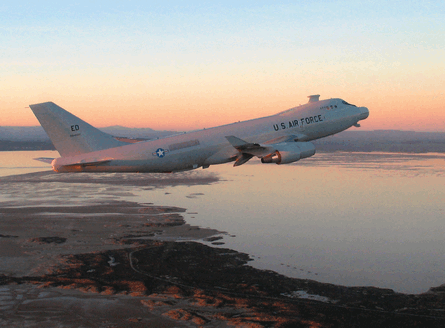Boeing has dramatically expanded the engagement envelope of the 747-400-based Airborne Laser Testbed (ALTB) since the first short-range intercept test in February.
The 1MW-class chemical oxygen iodine laser (Coil) system aboard the ALTB has been fired at new targets at a rate of about one a month since the first test shot, says Roger Krone, president of Boeing's network systems and sensors business.
The tests have extended the range of the ALTB by a factor of four or five times, Krone says.
The US Missile Defense Agency has not released the distance for the initial intercept, and Krone will not elaborate on the range achieved in the new test.
 |
|---|
© USAF |
So far, the ALTB has fired its laser at two different types of targets, called Marti and FMA. But the target set also could expand soon.
"By the end of this year, we have another one or two targets that we're thinking about shooting at a harder point in the envelope," Krone says.
The ongoing tests are aimed at restoring the programme's future. In 2009 Secretary of Defense Robert Gates criticised the range of the then-named YAL-1 Airborne Laser as impractical. He also ordered that the programme should convert from a development effort to testbed status.
Boeing has since worked to prove that the ALTB offers a capability against other targets than ballistic missiles in the boost phase of flight.
The company also is considering other lasing options, including adding a solid state laser to share the same light-path as the Coil-based photon stream.
"We could put a second laser in the back," Krone says. "There's enough volume in the airplane."
Source: Flight International
















